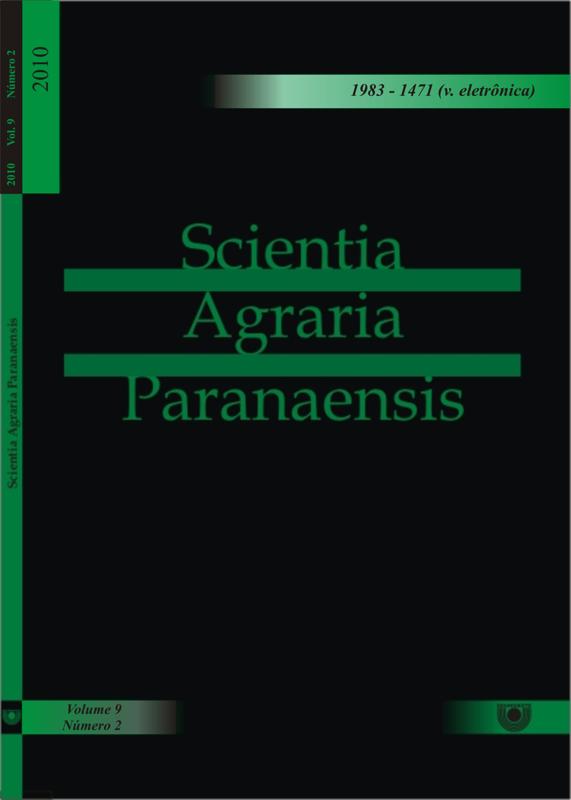Pollination on sweet passion fruit flowers (Passiflora alata DRYANDER)
DOI:
https://doi.org/10.18188/sap.v9i2.4573Keywords:
insetos, polinização, Passiflora alata, maracujáAbstract
This experiment was carried out in Ribeirão Preto (São Paulo, Brazil), aiming at studying the frequency and type of gathering (whether pollen or nectar) by insects on flowers of sweet passion fruit (Passiflora alata Dryander). The daily frequency and type of gathering were obtained by counting the insects, ten minutes in each hour, from the sunrise to the sunset, with five replicates. It was observed that the flowers started to open at 6:00 a.m. and closed at 5:00 p.m. The insects observed were Centris sp. (75.69%), Trigona spinipes (20.14%) and Apis mellifera (4.17%). Centris sp. visited the flowers from 6:00 a.m. to 5:00 p.m., being more frequent during the morning, to gather only nectar. Trigona visited the flowers from 6:00 a.m. to 4:00 p.m. to collect both nectar and pollen, showing preference for nectar gathering during the morning. A. mellifera only collected pollen, from 6:00 a.m. to 10:00 p.m., with frequency peak at 9:00 a.m.Downloads
Published
01-01-2000
How to Cite
MALERBO-SOUZA, D. T.; RIBIERO, M. F. Pollination on sweet passion fruit flowers (Passiflora alata DRYANDER). Scientia Agraria Paranaensis, [S. l.], v. 9, n. 2, p. p. 37–46, 2000. DOI: 10.18188/sap.v9i2.4573. Disponível em: https://e-revista.unioeste.br/index.php/scientiaagraria/article/view/4573. Acesso em: 15 jun. 2025.
Issue
Section
Scientific Article
License
Aviso de Direito Autoral Creative Commons
Política para Periódicos de Acesso Livre
Autores que publicam nesta revista concordam com os seguintes termos:
1. Autores mantém os direitos autorais e concedem à revista o direito de primeira publicação, com o trabalho simultaneamente licenciado sob a Licença Creative Commons Attribution que permite o compartilhamento do trabalho com reconhecimento da autoria e publicação inicial nesta revista.2. Autores têm autorização para assumir contratos adicionais separadamente, para distribuição não-exclusiva da versão do trabalho publicada nesta revista (ex.: publicar em repositório institucional ou como capítulo de livro), com reconhecimento de autoria e publicação inicial nesta revista.
3. Autores têm permissão e são estimulados a publicar e distribuir seu trabalho online (ex.: em repositórios institucionais ou na sua página pessoal) a qualquer ponto antes ou durante o processo editorial, já que isso pode gerar alterações produtivas, bem como aumentar o impacto e a citação do trabalho publicado (Veja O Efeito do Acesso Livre).
Licença Creative Commons
Esta obra está licenciada com uma Licença Creative Commons Atribuição-NãoComercial-CompartilhaIgual 4.0 Internacional, o que permite compartilhar, copiar, distribuir, exibir, reproduzir, a totalidade ou partes desde que não tenha objetivo comercial e sejam citados os autores e a fonte.


